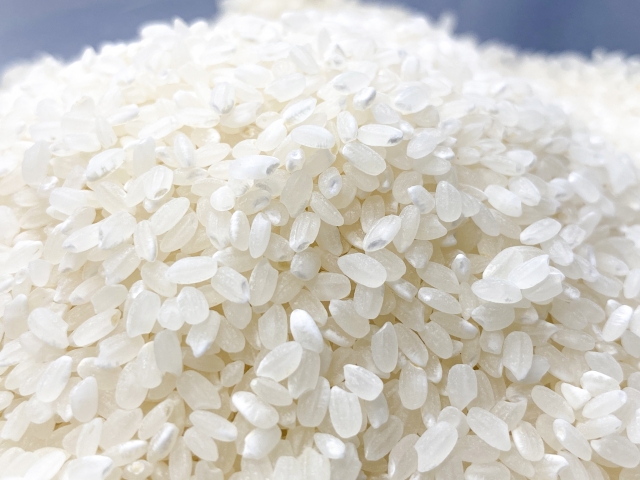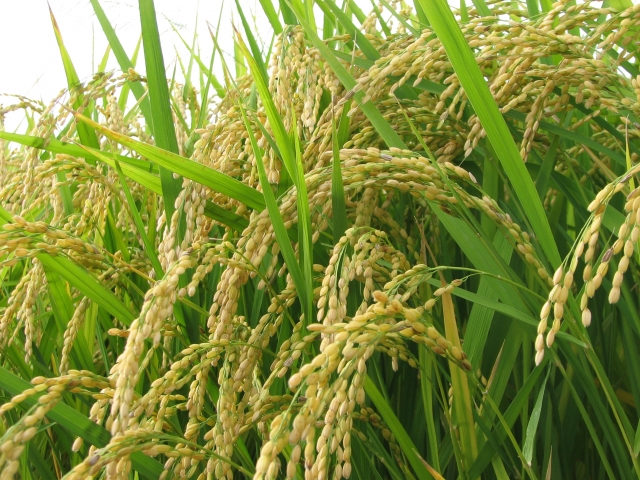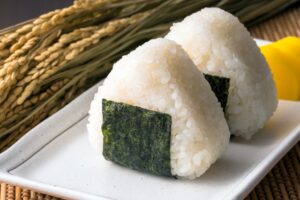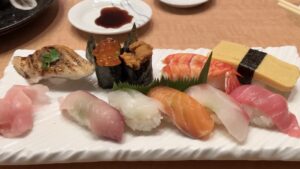Japanese rice is a staple of Japanese cuisine, known for its soft, slightly sticky texture and subtle sweetness. It is enjoyed not only freshly cooked but also in various dishes such as onigiri and sushi. Different varieties, such as Koshihikari and Akitakomachi, are grown in different regions, each offering unique characteristics that enhance different types of meals.

Nutritional Value
Japanese rice is rich in carbohydrates, making it an important energy source. It also contains B vitamins and minerals. Brown rice (genmai) is even more nutritious, offering additional fiber and vitamins.
Characteristics of Japanese Rice
- Sticky and Sweet: The soft, slightly sticky texture and mild sweetness make it different from other types of rice.
- Delicious Even When Cold: This makes it ideal for dishes like onigiri and sushi.
- High Water Absorption: Proper soaking before cooking ensures a fluffy and flavorful result.
Types of Japanese Rice
Japanese rice can be broadly classified into two main types.
Uruchimai (Non-glutinous Rice)
This is the most common type of Japanese rice, featuring a slightly sticky and chewy texture. It is used for everyday meals, sushi, and donburi. Popular varieties include Koshihikari, Akitakomachi, and Hitomebore.
Mochigome (Glutinous Rice)
This type of rice is much stickier than uruchimai and is mainly used to make traditional Japanese sweets (wagashi), mochi (rice cakes), sekihan (red bean rice), and okowa (steamed rice dishes).
Popular Varieties of Japanese Rice
Different regions in Japan produce unique rice varieties with distinct characteristics.
- Koshihikari: The most popular rice variety in Japan, originally from Niigata. It has a rich sweetness and strong stickiness.
- Akitakomachi: A famous variety from Akita Prefecture, known for its balanced stickiness and smooth texture.
- Hitomebore: Grown in Miyagi Prefecture, this rice is soft, fluffy, and slightly sticky.
- Sasanishiki: A traditional rice variety with a less sticky texture, making it ideal for sushi.
- Nanatsuboshi: A Hokkaido-grown variety with a light taste and moderate stickiness.
How Japanese Rice is Made
1.Planting – Rice seeds are sown in water-filled paddies, usually in spring.
2.Growing – The rice plants grow in flooded fields, which help control weeds and pests while maintaining optimal growing conditions.
3.Harvesting – In autumn, when the rice reaches maturity, it is harvested and dried.
4.Processing – The husks are removed, and the rice is polished to achieve the desired texture and appearance.

History of Japanese Rice
Rice cultivation in Japan dates back over 2,000 years. During the Yayoi period (5th century BCE–3rd century CE), rice farming techniques were introduced from mainland Asia, and over time, rice varieties adapted to Japan’s unique climate and soil conditions. By the Edo period (1603–1868), rice had become a fundamental part of the economy, serving as both food and a form of currency.


Comments